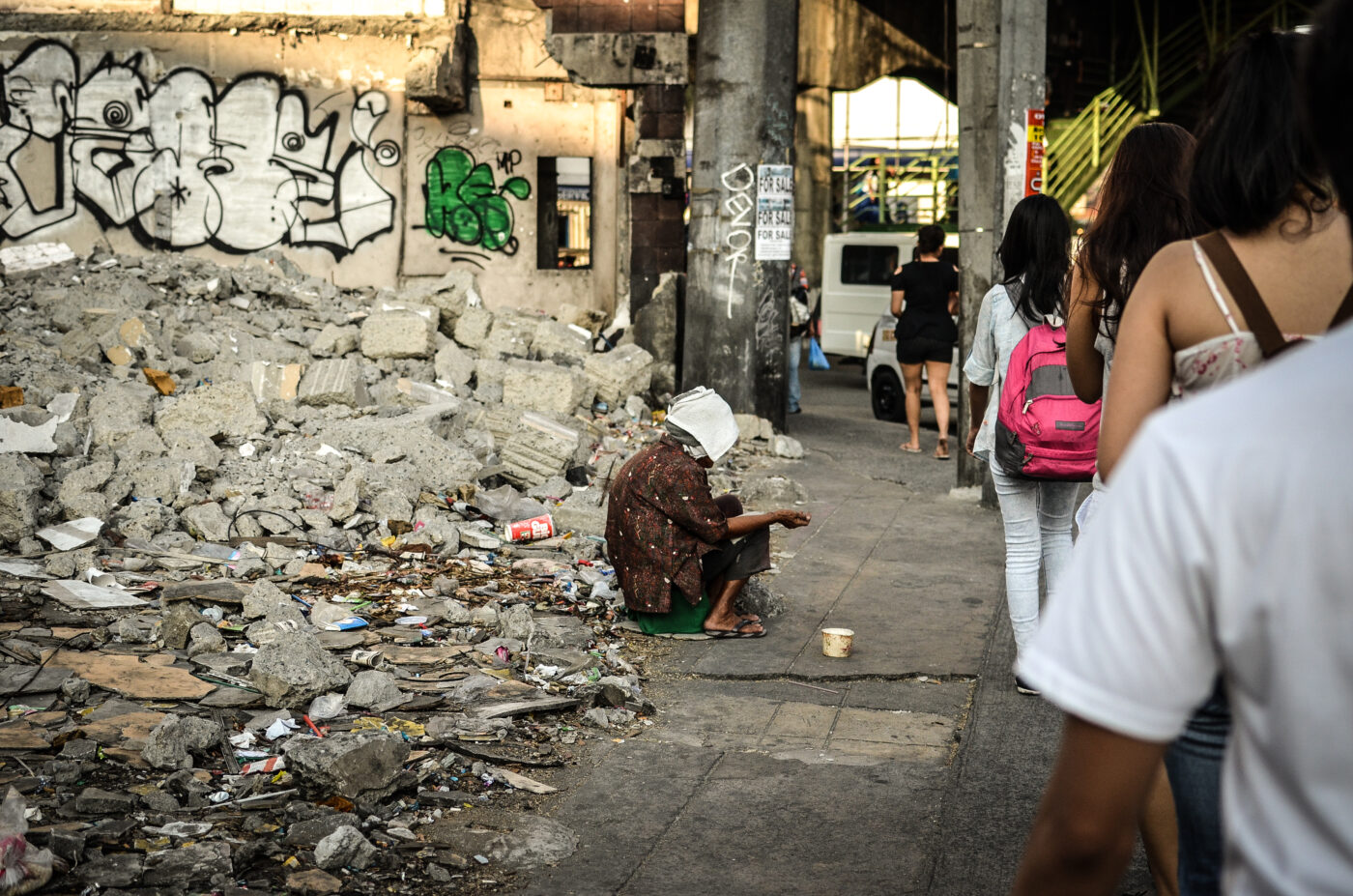FOLLOWING THE visit of Pope Francis last January, the government received criticism after a report that was circulated on social media stated that some homeless families in Metro Manila were evicted from the streets to keep them away from public viewing.
Few days later, the government said that these 99 families were actually sent to a resort in Batangas as part of training for the Department of Social Welfare and Development’s Modified Conditional Cash Transfer (MCCT) program. Families covered by this program are entitled to receive various stipends from the government.
After the training, the Philippine Daily Inquirer reported that 74 of these families have been included in the list of beneficiaries of the MCCT, while the others have availed of alternative social service programs by the government.
While these families may have benefitted from government assistance, the same cannot be said about the thousands more across the country. Over the years, informal settling in urban spaces has remained a rampant issue in the Philippines.
Causes and measures
According to the Metropolitan Manila Development Authority (MMDA), there were already 2.8 million informal settlers, equivalent to approximately 556,526 families around Metro Manila in 2010. To date, the National Housing Authority (NHA) has an estimate of 1.5 M informal settler families (ISFs) across the Philippines, 40% of which are situated in Metro Manila.
In her study entitled “Property rights, security of tenure and the urban poor in Metro Manila” that was emailed to The GUIDON, Sociology and Anthropology Chair and Professor Emma Porio, PhD wrote that the proliferation of informal settlers in urban places has been caused by “rapid urban growth, high population densities, increasing poverty and an escalation of land prices.” She explained that these factors have led to the shortage of affordable housing, thereby leaving poor households without a security of tenure.
To address this problem, the government has initiated various programs for informal settlers. These include the Land Tenure Assistance Program (LTAP) and the Community Mortgage Program (CMP) spearheaded by the NHA and the Social Housing Finance Corporation (SHFC), respectively. Under the LTAP, informal settlers are provided with financial credits to acquire land and build a house. The land titles are only given to organized community associations who have been occupying the land to be acquired. On the other hand, the CMP, much like the LTAP, also extends mortgage loans to informal settlers. The difference between the two is that the NHA is managing fully the LTAP, while the CMP is in coordination between the SHFC and the national and local government.
Rising numbers
Despite these efforts, the number of informal settlers in the Philippines continues to fluctuate due to susceptibility to natural disasters and high risks for conflict and violence.
According to the Internal Displacement Monitoring Center (IDMC), approximately 123,000 people were displaced last year due to armed conflicts and violence between the government and Muslim non-state armed groups. By the end of 2014, about 95,000 of these internally displaced people (IDPs) remained largely concentrated in Mindanao.
IDPs were estimated to be at 383,000 as of early February this year, due to natural disasters. These people were displaced by Typhoons Yolanda and Pablo from 2013, and Ruby and Seniang last 2014.
For both cases, returning to previous homes is the most preferred solution for these IDPs. However, these people face challenges such as persistent conflicts, or the destruction of the area itself, that hinder them from returning.
Future management of informal settlers
Although innovative housing programs such as the LTAP and CMP have been effective in relocating informal settlers, Porio argued that the lack of economic opportunities in relocation sites have forced residents to go back to unauthorized settlements. She wrote that aside from having a security of tenure, access to basic social services, job opportunities, and the level of law and order must also be addressed.
The LTAP and CMP have focused more on providing land ownership and recovering mortgages. Porio explained that this diminished the poverty reduction potentials of these programs. “The focus on mortgage recovery has pushed administrators to demand so many documents… that can only be produced by formal sector workers,” she wrote. This has led to the exclusion of a large number of the poor working in the informal sector.
Porio recommended the use of intermediate instruments of tenure, such as land proclamations, occupancy leases and government directives for non-eviction, as a way to provide more security to informal settlers. More importantly, she added that this should be supported by sound social services and livelihood programs from the government.
“Social housing programs…must be redesigned to recognize the different needs and capabilities of the urban poor,” she wrote. She added that these programs should include the more pressing needs of the poorest of the poor.




